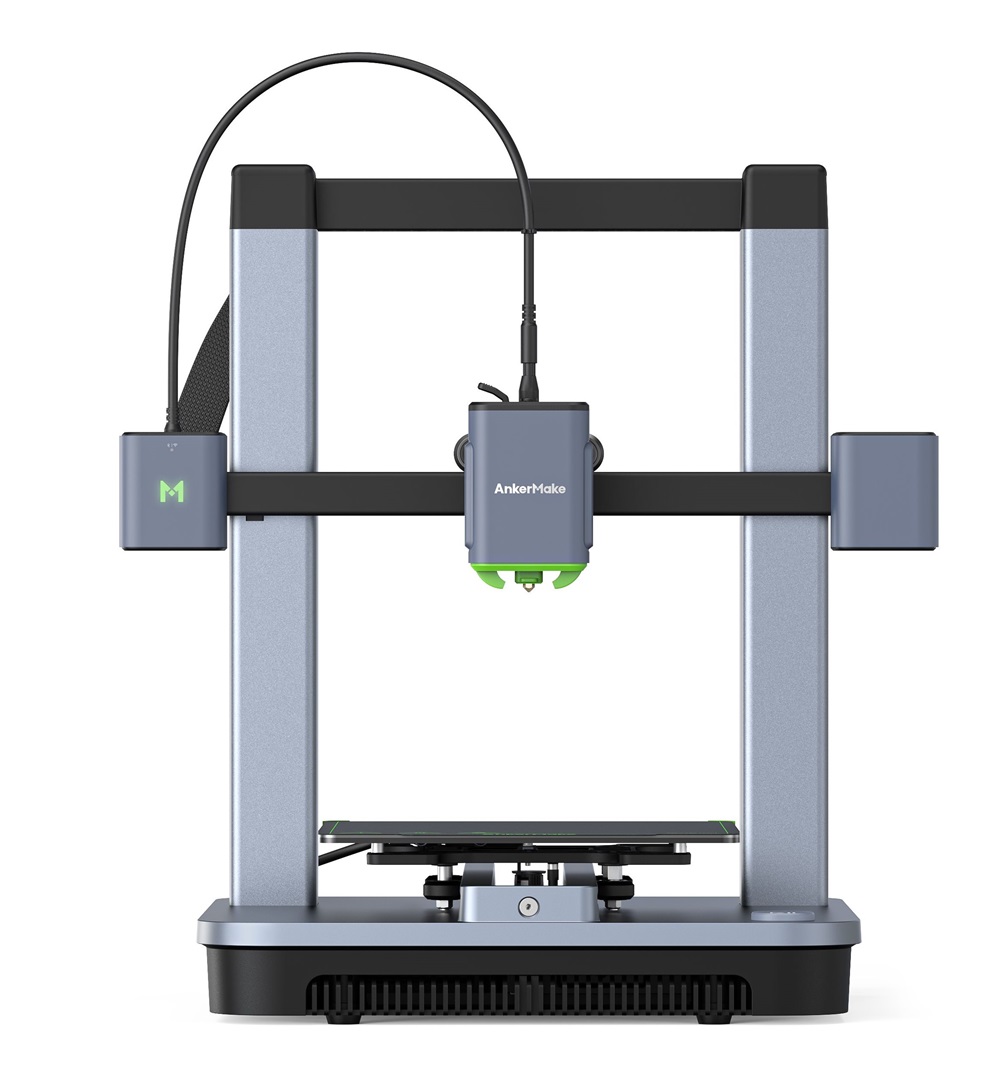Compare K1 Max vs M5C
Comparison between the best 3D printers
Choose the best 3D printer at the best price. The cheapest 3D printers are here.
Buy a 3D printer here with 3D Fila.
 |
 |
|
| Model | K1 Max[BUY K1 Max] |
M5C[BUY M5C] |
| Printing Material | Filament | Filament |
| Buy Filament for Creality 3D K1 Max | Buy Filament forAnkerMake M5C | |
| Estimated price | $1300,00 | $399,00 |
| Manufacturer | Creality 3D | AnkerMake |
| Release Year | 2023 | 2023 |
| Print Volume [mm] | 300x300x300 | 220x220x250 |
| Printer Size [mm] | 435x462x526 | 466x374x480 |
| Weight [kg] | 18 | 9,6 |
| Power Loss Recovery | YES | YES |
| Enclosed printer | YES | NO |
| Bed Leveling | Automatic | Automatic |
| Filament End Sensor | YES | YES |
| Bed type | Heated | Heated |
| Power supply system | Direct Drive | Direct Drive |
| Standard nozzle | 0,4 | 0,4 |
| Maximum Nozzle Temperature [°C] | 300 | 300 |
| Maximum Bed Temperature [°C] | 100 | 100 |
| Maximum printing speed [mm/s] | 600 | 500 |
| Filament holder | YES | YES |
| Camera for supervision | YES | YES |
| Recommended filaments | ABS, PLA, PETG, TPU, PA, ASA, PC, PLA-CF, PA-CF, PET-CF | PLA, PETG, TPU, ABS, PA, PLA-CF, PETG-CF, PA-CF |
| Recommended slicers | Creality Print, Cura, Simplify, Slic3r, IdeaMaker e outros | AnkerMake Studio (macOS, Windows), Simplify3D, Ultimaker Cura, PrusaSlicer |
| Maximum Resolution [mm] | 0,1 | 0,1 |
| Processor | ||
| Display | Display touchscreen 4,3'' | |
| Power Supply | 350 W | |
| Connectivity | USB / Wi-Fi / Ethernet | Wi-Fi, USB-C, Bluetooth |
| Operating systems | Windows, Mac, Linux | Windows, Linux e Macbook |
| Date of registration in the system | 2023-12-01 | 2024-09-11 |
| Release date | 2023 | 2023 |
| Extra features | The Creality K1 Max stands out as a fast Core XY 3D printer with a large build volume of 300 x 300 x 300 mm. It is fully enclosed and equipped with AI sensors to prevent print failures. This model has a smooth and flexible PEI build platform, and uses an automatic leveling system with LIDAR, as well as a filament run-out sensor. LAN, Creality Cloud and USB Flash Disk connectivity are available, as well as a 4.3-inch touchscreen interface. The K1 Max is robust, weighing in at 18 kg, and includes an AI camera and limited version of the Klipper firmware. Its motion system is solid and the printer is efficient with high-temperature filaments, but it is not silent. Assembly is 99% complete, requiring only minor adjustments before use. | The AnkerMake M5 printer stands out for its impressive print speed, reaching up to 500mm/s. It features AI print monitoring, an integrated camera for creating timelapses, auto-leveling bed with pressure sensor, direct extruder, flexible PEI-coated build plate, and Wi-Fi and USB-C connectivity. Assembly is quick and easy, and the printer is designed to deliver high print quality and ease of use. |
| Support for multiple colors and materials (AMS and CFS) | NO | NO |
Notes * |
||
| Cost-benefit | 7 / 10 | 7 / 10 |
| Hardware | 4.8 / 10 | 3.2 / 10 |
| Tela | . | . |
| Print volume | 4 / 10 | 3 / 10 |
| Performance | 5 / 10 | 4 / 10 |
| [BUY K1 Max] | [BUY M5C] |
Conclusion |
| In conclusion, the comparison between the Creality K1 Max and the AnkerMake M5C reveals distinct strengths and trade-offs that cater to different user needs in the 3D printing realm. The K1 Max, with its larger build volume and enclosed design, is geared toward those who prioritize high performance and flexibility in printing a wide range of materials. Its advanced features, such as a robust AI monitoring system, automatic leveling with LIDAR, and a high maximum printing speed make it an excellent choice for serious hobbyists and professionals looking for reliability in their print results. However, its higher price point reflects these capabilities and the inclusion of advanced technology. On the other hand, the M5C presents a more budget-friendly option while still delivering impressive print speeds and user-friendly features. It allows for easy assembly and straightforward operation, making it an appealing choice for beginners or casual users who may not require the extensive functionalities of the K1 Max. While it has a smaller print volume and fewer advanced features, its performance in quality and speed is commendable at a significantly lower cost. Ultimately, the choice between these two models will hinge on the user's specific needs, budget constraints, and level of experience in 3D printing. For those seeking a top-tier experience with ample capabilities, the K1 Max is the superior choice. Conversely, for users looking for a cost-effective and efficient solution, the M5C stands out as a compelling option. Both printers score highly on cost-benefit ratios, but they serve different segments of the market effectively. |

